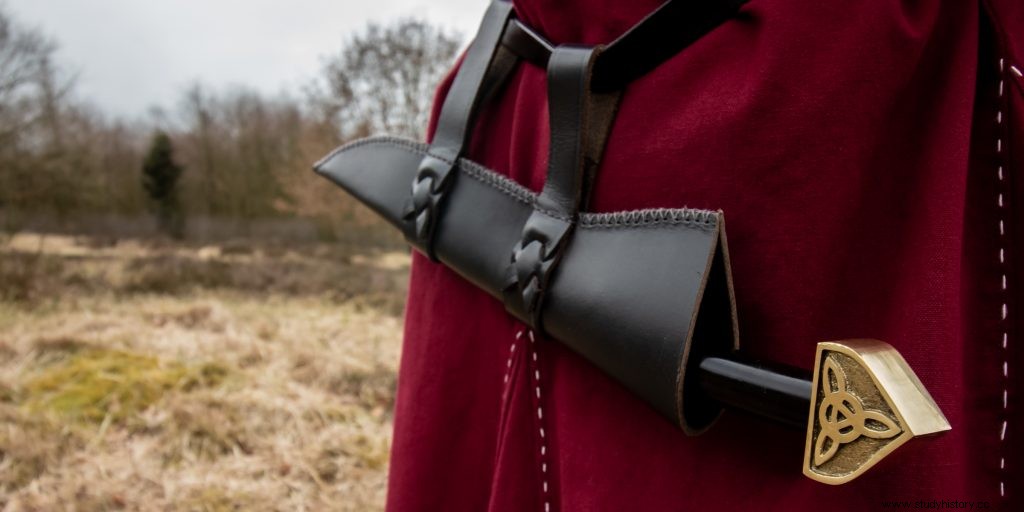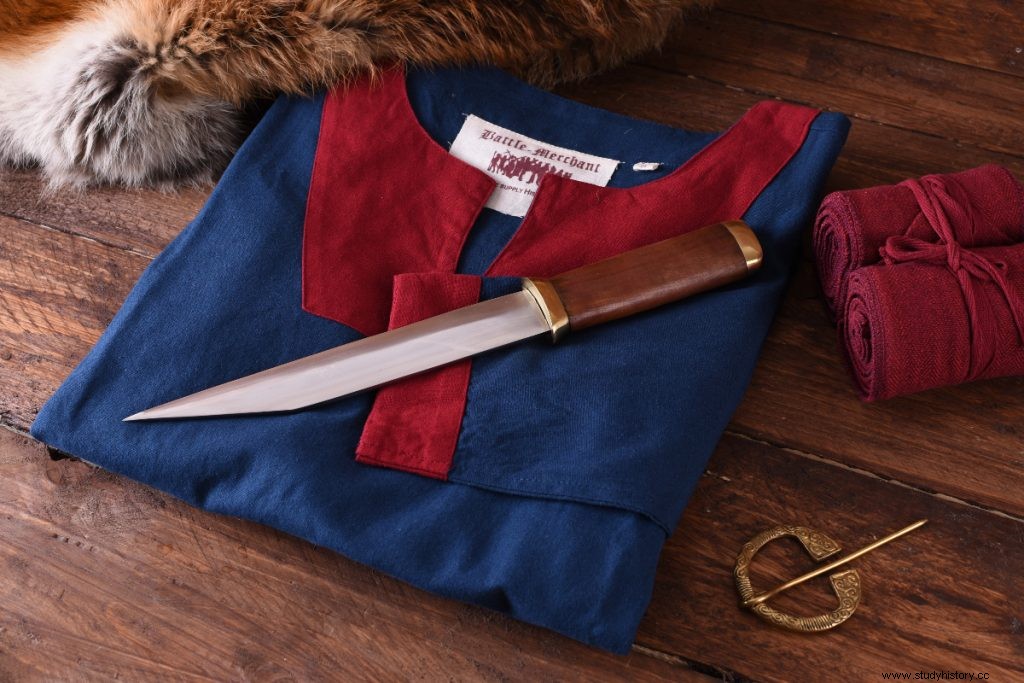Teutons and Vikings were feared warriors. Not only their wild battle cry preceded them, but also the clang of their war weapons. In close combat, the men from the north used a dreaded short sword, the sax. From the Iron Age to the High Middle Ages, this cutting weapon cut through ranks - and even today the sax cuts a dashing figure, on a realistic doublet or at least on the wall.
If you want to buy a sax, you should consider that there are different saxes. You can find out how these differ and what they were used for here.
The sax in history - deadly in battle, practical in everyday life
Depending on the length and era, the sax is a hybrid of a short sword and a knife. For the Vikings, the seax was a single-edged slashing weapon for cutting and slashing at close range. This was also the rule for Iron Age swords, such as the Roman Gladius.
The word itself derives from the Old High German word “sahs”, which simply means knife. The first seaxes appeared in Scandinavia from the 4th century BC. It was not until the 9th century AD that the ax was slowly being replaced by other weapons. At least as a weapon, because the versatile knives were still widely used in Scandinavia and the British Isles.
The seax (or skramasax) was not only a feared weapon throughout the ages, but also spread spatially from Scandinavia to the British Isles and mainland Europe. In contrast to the long swords that were used later, seaxes were affordable weapons. These were therefore not only used in combat, but also for wood and field work and everyday crafts.
Short Sax - The Ace in the Shield Wall
Depending on the length of the axe, the lead also differed. A short sax with a blade length of 20-25 centimeters was practical for work and deadly in hand-to-hand combat. Once two squads were engaged in melee combat, each fighter's range of motion shrank enormously. A short sax could still cause extreme damage to the enemy here and the Vikings could even cut through the gaps in the shield wall with ease.
The long sax - close to the classic sword
The long sax did not develop until the end of the 7th century. With a blade length of up to 50 centimeters, it was much closer to the classic sword than the short sax. In fact, some long grips indicate that long saxes were even used as the main weapon in Westphalia and Lower Saxony.
A notable find from the 9th century is the Beagnoth sax found in the Thames. It is richly decorated with runes:one with the runic alphabet and the other with the word Beagnoth - possibly the wielder or smith of the sword.

Narrow and broad sax
The division into narrow sax and broad sax is also common. Broad saxes in particular were richly decorated and often carried runes, depictions of animals, faces or - inspired by the Romans - depictions of phallus. The latter was particularly popular in Gaul.
In all these cases, however, seaxes were weapons at the sharp end of which no enemy wanted to be found.
Making the Sax
In the past, the seax was often not made of steel but of forge-welded iron. Several layers were joined together under forging heat, with the cutting edge often being made of a harder material than the body. However, there is also historical evidence of steel axes which - according to today's metallurgical investigations - were manufactured to a high standard and consisted of an elegant composition of core and jacket steel.
Additional blood grooves and fullers reduced the weight of the blade and made it easier to use.

An authentic piece from the north - buy a matching Winger Sax
If you want to buy a real seax today, you should not only pay attention to the blade, but also pay special attention to the handle and sheath.
You can either buy the sax with a traditional wooden scabbard or with a leather scabbard, like the sax was later worn by the Vikings. And if you attach particular importance to authenticity when carrying it, you should not only carry the knife parallel to your belt, but also with the cutting edge upwards.
Even with the handle you have a historical choice between the materials wood, horn or bone used centuries ago. And while the seax was mostly made quite simply between the Iron Age and the Middle Ages, some finds nevertheless show that the handles of the Vikings in particular were richly decorated and embossed.
With the blade, you naturally have the advantage of modern metallurgy today, because today's replicas offer you a blade made of decorative steel. You can even find blunt models with a rounded tip for exhibition fights in our selection.
From the simple, riveted wooden handle to rich detailing, you can buy the seax that suits your warrior soul.
